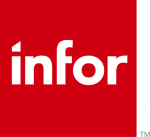This blog post is an excerpt of our recent report with Infor, Paving the Path for Government Digital Transformation via the Cloud. To download the full report, head here.
Digital transformation is the transformation of business activities, processes, competencies and models to fully leverage digital technologies and their impact in a strategic and prioritized way, with present and future shifts in mind. And this transformation is changing the way business applications work for government, said Bobby.
As government agencies moved into the new millennium, business applications were transaction-driven. People would put data into information systems and conduct transactions, but it was not always easy getting information out to service a wide range of business partners, constituents, contractors and employees.
Information technology departments built huge data warehouses, which integrated subject-oriented, historical data from multiple incompatible systems into a consistent view of the organization. Over time, as data volumes increased, bottlenecks began to develop in these data warehouses, which were built on common relational database management systems that used extract, transform and load (ETL) tools for data access.
“Often you were data-rich, but information-poor,” Bobby said.
Today, agencies want better value from their enterprise applications. For example, with basic enterprise resource planning applications, they might want to know the fundamental pieces of information they should know about a transaction or a vendor or their budget while the application is processing the information. As a result, business applications are providing more information within the application; not as an afterthought in a data warehouse.
“We are starting to see applications that really drive to the mission of the organization,” Bobby said. For instance, Infor has a solution called Care Workloads, an analytical tool that looks at the patient intake into a hospital and answers questions such as, “How many people came into an emergency room or checked into the hospital?” Based on the patient intake, the application will adjust the schedule to make sure the hospital has enough clinicians, nurses, physicians, staff members and technicians to accommodate the number of patients in the hospital that day or week. It is responding to the needs of the organization based on the patient information in the application.
Agencies that don’t start the digital journey to provide their audience these kinds of capabilities risk “being stale, outdated and poor performers,” Bobby said.
The federal government budget is increasingly competitive, with different components within an agency vying for a bigger slice of the budget to serve their constituents. Those teams that are best at defining their missions and business results are going to get a bigger slice of the budget pie. “Those organizations that don’t transform themselves are doing a disservice to themselves as well as to the constituents they serve,” Bobby said.
Steward echoed that sentiment, noting that 60 to 90 percent of government agencies’ budgets can be eaten up by personnel costs. With as little as 10 percent left, agencies have limited resources to keep pace with technology and maintain the pace of innovation. Plus, many local and state governments lack the pool of talent with the necessary skills to keep up with changes.
“With all the different technologies coming out, it becomes tough for cities, counties and federal agencies to maintain these systems they are deploying,” Steward said.
Given these factors, it’s more important than ever that government turn to digital transformation to keep pace with innovation.






Leave a Reply
You must be logged in to post a comment.